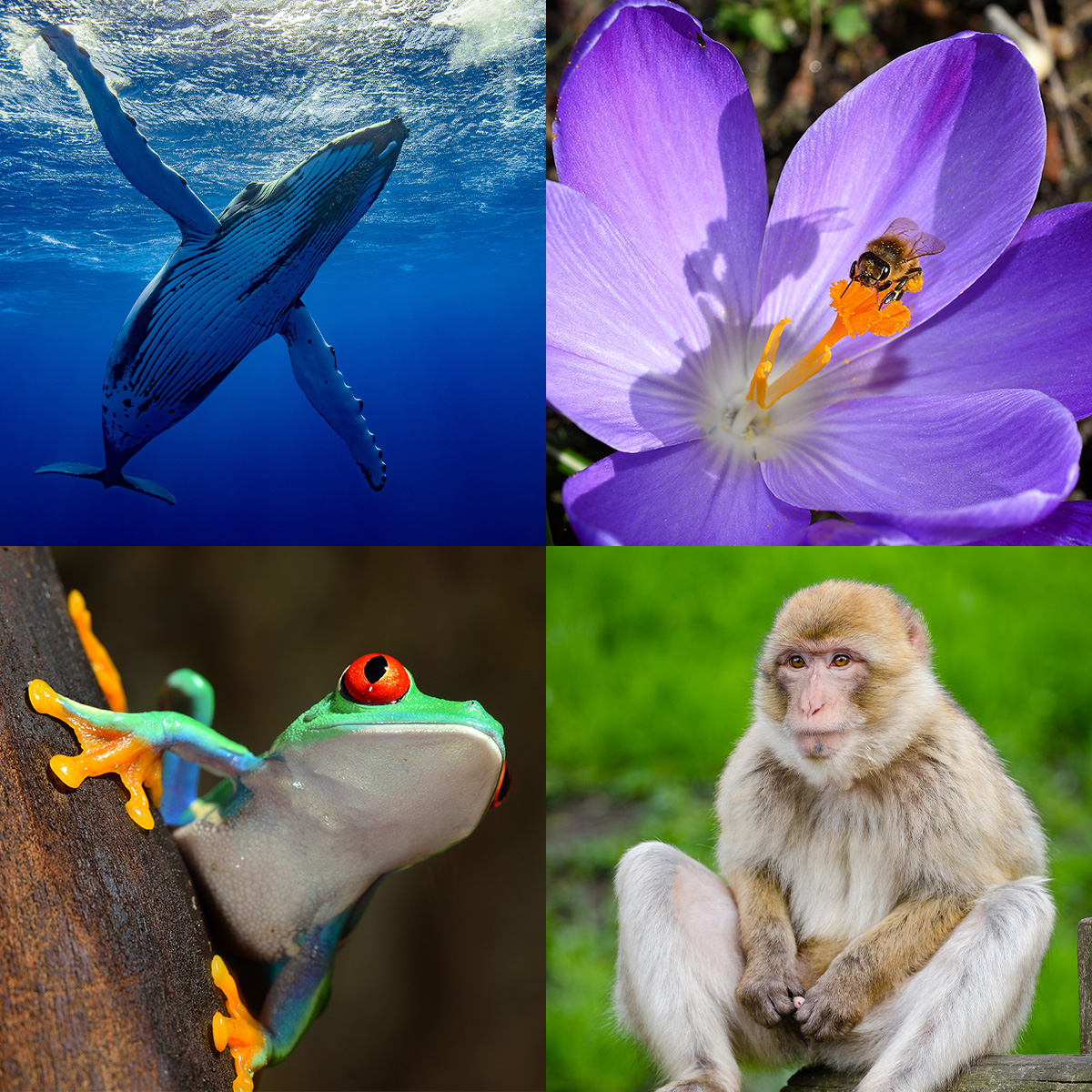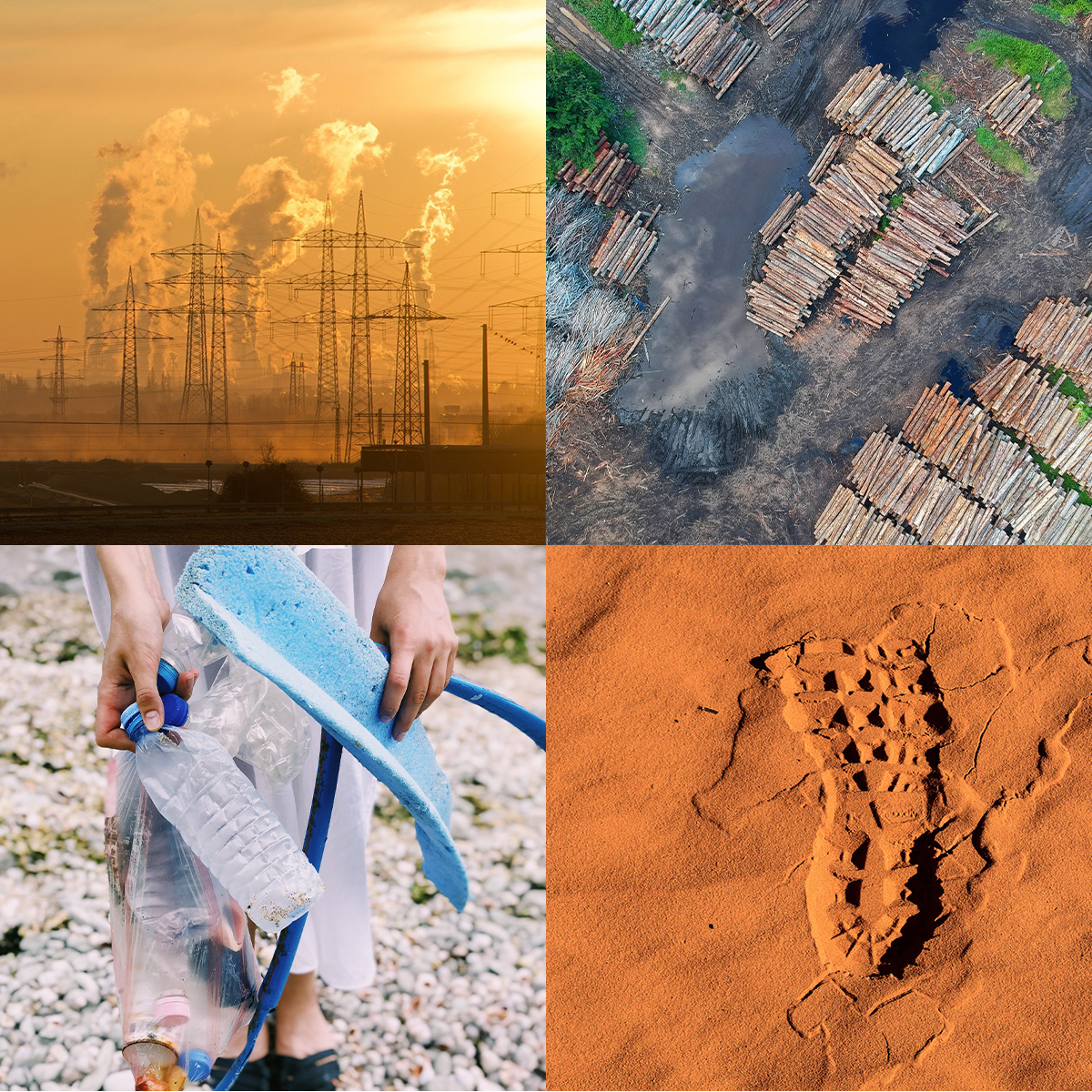What is biodiversity and why is it important?
Biodiversity is the variety of living species on Earth – plants, animals and microorganisms – and the ecosystems they form. An ecosystem is the name given to all living species that live together in a stable community, interacting with one another and their physical environment. Biodiversity includes the diversity within species and between different species within terrestrial, freshwater and marine ecosystems. Ecosystems need a balanced and diverse number of species to thrive.
When people think of conserving biodiversity, they often think of efforts to save animals such as the polar bear or the tiger. While protecting single species is important, it is equally important to protect ecosystems. When there is a shift in the balance of an ecosystem, such as the loss of a plant or an animal or an introduction of new species, this shift can lead to irreversible consequences. Therefore, it is important to understand what makes an ecosystem thrive.
Biodiversity plays a critical role in sustaining human populations across the globe. We depend on it for sustained food growth, for clean air and water and for medicine and shelter. It is no surprise then that ecosystem degradation threatens our most basic necessity – a healthy environment to live and thrive in. This is especially true of biodiversity hotspots, which house some of the largest diversity of species in the world and provide important life-support services to the people who live in and around them.
In addition, biodiversity is embedded in human cultures and is fundamental for our understanding of the world. Biodiversity enriches our lives – it has economic, cultural, recreational, religious and aesthetic importance across the world. We have celebrated it in art, music and literature throughout history. More than 190 countries acknowledge its importance to human populations through a show of support for the Convention on Biological Society.

Despite international efforts, global biodiversity is being lost at faster rates than ever observed in geological history. There are many drivers of this unprecedented loss including rapid urbanization, the spread of invasive species, worsening pollution and climate change.
Addressing each of these threats is complicated. Sometimes new solutions can result in unexpected consequences and tradeoffs. For example, how do we preserve nature while also ensuring equitable and inclusive economic development? What happens if saving one species means that we cannot use limited resources to save another? Which species are the most critical to save?
Answering these questions goes beyond the classroom; we must collaborate with communities, corporations, governments and nongovernmental organizations to ensure that solutions meet the different needs of both nature and people so they can thrive in unison. An important component to achieving this balance is ensuring that we have robust and sufficient scientific evidence to support decision-makers as they plan their conservation efforts.

Crafting interdisciplinary solutions
In a complex world, a single perspective cannot eliminate threats to biodiversity; a single solution is not sufficient to preserve and conserve biodiversity.
The enormous scope and uncertainty of this crisis makes it both a unique challenge and a tremendous opportunity. It demands the engagement of social and biological scientists, decision and policy makers and community members worldwide. We at the Center for Biodiversity Outcomes at Arizona State University address this need for broad participation through our commitment to interdisciplinary collaboration and multi-stakeholder engagement, while drawing on a long history of conservation biology research at ASU.
In CBO, we have three dynamically integrated areas of operation: education, research and partnerships. Our actionable science model bridges academia and stakeholders to produce biodiversity conservation science that informs decision-making at local, national and global scales.
We draw expertise from over one hundred ASU faculty affiliates and a network of more than 10,000 scientists representing hundreds of organizations in over 160 countries. Students and postdoctoral fellows play a key role in propelling our research. Together, we collaborate with NGOs, corporations, governments and other academic institutions to design innovative solutions to some of the world’s most pressing biodiversity conservation issues.
Our research approach encompasses three focal areas: (1) evidence, metrics and monitoring, (2) decision science and (3) stakeholder engagement. As we advance research, we simultaneously train the next generation of conservation leaders, facilitating hands-on educational and networking experiences in their respective fields.
A diversity of approaches
Because a single perspective is not sufficient to sustain biodiversity in the midst of unprecedented biophysical, institutional and cultural changes, a variety of disciplines and approaches are required. CBO convenes biodiversity conservation experts come from a broad spectrum of disciplines, including chemistry, biology, engineering, law, communication, economy and social sciences. A diversity of cultural and socio-economic perspectives is also needed to understand the complex dynamics affecting biodiversity, such as economic development, politics, cultural, artistic and spiritual views on nature and humans’ relationship to it.
Working in the field
Some of the work we do includes developing tools to assist partner organizations in making science-informed decisions. We target many different topics, such as sustainable economic development, endangered species protection, organisms’ adaptation to climate change and oceans plastics pollution.
Continue exploring this site to learn more about who we are and what we do!

